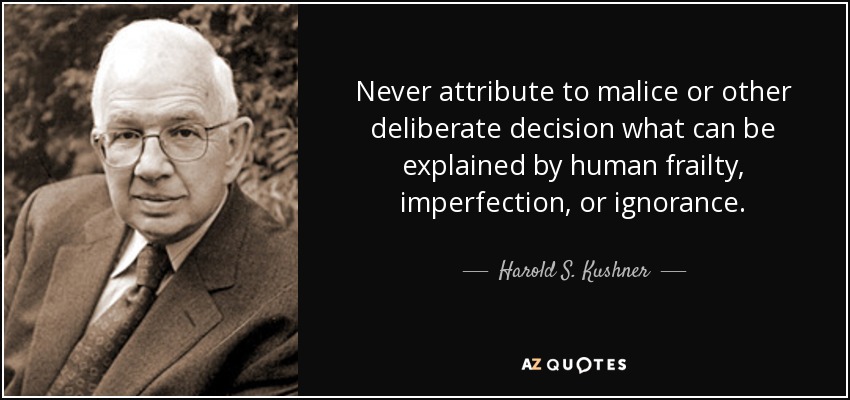Never Attribute To Malice

In a world often marked by misunderstandings, conflicts, and controversies, there exists a simple yet profound principle that guides us through the labyrinth of human interactions: “Never attribute to malice that which is adequately explained by stupidity.” This principle, famously known as Hanlon’s Razor, serves as a timeless reminder of the importance of giving others the benefit of the doubt.
The origins of Hanlon’s Razor can be traced back through history, with variations appearing in different forms across cultures and ages. However, it was named after Robert J. Hanlon, who formulated it in the mid-20th century. Despite its simple wording, its implications are far-reaching, offering a lens through which to interpret the actions of others with empathy and understanding.
At its core, Hanlon’s Razor encourages us to adopt a stance of humility in our interpretations of the motivations behind others’ actions. Rather than immediately assuming malicious intent, we are prompted to consider alternative explanations, such as ignorance, misunderstanding, or incompetence. This shift in perspective fosters a more compassionate and forgiving approach to human interactions.
In our increasingly interconnected world, where communication occurs at the speed of light and opinions clash with unprecedented frequency, the relevance of Hanlon’s Razor cannot be overstated. Misinterpretations abound, fueled by the limitations of language, cultural differences, and the inherently subjective nature of perception. In such a landscape, the application of Hanlon’s Razor serves as a beacon of clarity, cutting through the fog of miscommunication and mistrust.
Table of Contents
ToggleApproach
Embracing Hanlon’s Razor empowers us to break free from the shackles of cynicism and suspicion that often plague interpersonal relationships. By assuming good intentions, even in the face of apparent wrongdoing, we open the door to dialogue, reconciliation, and mutual understanding. This does not mean turning a blind eye to harmful behavior or excusing genuine malice; rather, it invites us to approach conflicts with a spirit of curiosity and empathy, seeking to uncover the underlying motivations behind actions.
Collaborate
In the realm of leadership and management, Hanlon’s Razor offers invaluable guidance for fostering a positive and productive work environment. By reframing mistakes and missteps as opportunities for learning and growth, rather than evidence of malicious intent, leaders can cultivate a culture of trust, accountability, and psychological safety within their teams. Employees are more likely to take risks, collaborate effectively, and innovate when they feel valued and supported, free from the fear of punitive judgment.
Complemented
It is essential to acknowledge the limitations of Hanlon’s Razor and recognize that there are instances where malicious intent does indeed exist. Blindly applying Hanlon’s Razor in situations of abuse, exploitation, or systemic injustice can perpetuate harm and enable oppressors to evade accountability. Therefore, while Hanlon’s Razor serves as a useful heuristic for navigating everyday interactions, it should be complemented by critical thinking, ethical reflection, and a commitment to social justice.
Conclusion
Hanlon’s Razor offers a powerful antidote to the toxicity of mistrust and suspicion that pervades our world. By choosing to interpret others’ actions with generosity and understanding, we pave the way for deeper connections, meaningful dialogue, and collective progress. In a world where malice often seems omnipresent, Hanlon’s Razor reminds us that sometimes, the simplest explanations are also the most compassionate.





